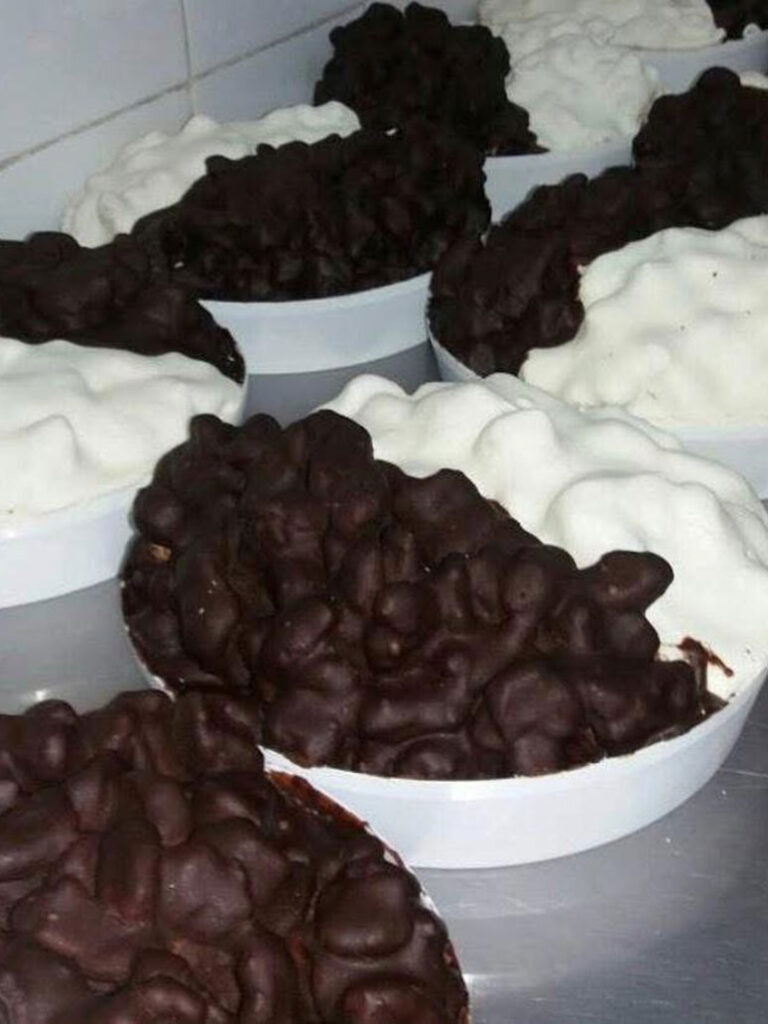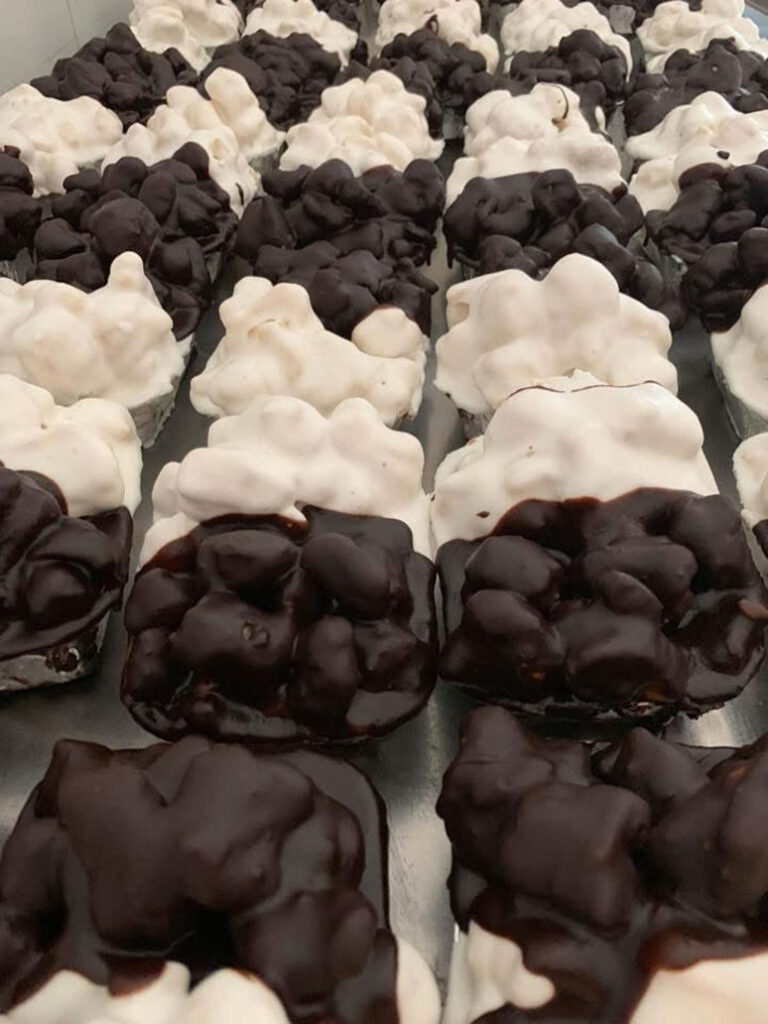A traditional dessert from Messina and it’s province.
The name comes from the small fried dough balls (pigne in Italian), which are coated on one side with a white lemon glaze and on the other with a rich chocolate glaze.
Let me tell you about pignolata from Messina, also known as pignolata glassata (glazed). It’s a traditional dessert from my hometown, typically made during Carnival season, though you can find it in pastry shops throughout the year in the city of Messina. Some trace its origins back to the Roman Empire. In fact, when Sicily was one of the Empire’s most prosperous provinces, during the festival of Carnem Levare, people would eat honey-coated sweets shaped like pinecones as a way to attract good fortune—the famous honey pignolata.
In the pastry shops in the city of Messina.

Pignolata

Pignolata

Pignolata
ITS ORIGINS
Although delicious, the wealthy classes originally didn’t eat this dessert, as it was considered food for the poor. During the Spanish rule, pastry chefs in Messina began to add more refined ingredients like cocoa and lemon, aiming to create a more elegant dessert. That’s how pignolata from Messina as we know it was born—and it has remained part of the Sicilian Carnival tradition ever since. Today, it’s officially listed as a Traditional Food Product (PAT) by the Italian Ministry of Agricultural, Food and Forestry Policies, under the name pignolata di Messina.
ITS NAME
The name comes from the small fried dough balls (pigne in Italian), which are coated on one side with a white lemon glaze and on the other with a rich chocolate glaze. These bite-sized pieces are grouped together to form the finished dessert. The aromas of citron and bergamot transport you to another world. Originally, the dough balls were fried and then simply coated with honey.
Special thanks to Domenico from Pasticceria del Duomo for the beautiful photos, and I invite you to come explore Messina and its many wonders.
RECIPE:
How to prepare pignolata from Messina: – 500 g of flour – 6 egg yolks – 1/2 glass of grappa or pure alcohol – 250 g of lard or oil for frying – A pinch of salt
For the dough:
In a bowl, whisk together the alcohol and egg yolks. Gradually add the flour and knead the mixture until the dough pulls away from the sides of the bowl. It should be firm, not soft. Roll the dough into many small balls about 2 cm in size. Heat the lard (or oil) in a pan or pot. Once it’s ready, fry the dough balls until golden. Drain them well.
THE GLAZES
Chocolate glaze: – 250 g of sugar – 15 ml of water – 150 g of dark chocolate
Lemon glaze: – 250 g of sugar – 2 egg whites – Juice of 2 lemons – A pinch of salt
Preparation
For the chocolate glaze: Melt the sugar with the water in a heavy-bottomed saucepan over very low heat. Once the sugar has fully melted, remove from heat and add the chopped chocolate, stirring constantly until it’s fully melted and creamy.
For the lemon glaze: Beat the egg whites with a pinch of salt until foamy. In a separate pan, melt the sugar over low heat, then remove from heat and quickly mix in the egg whites, stirring vigorously. Add the lemon juice and keep stirring until smooth.
To finish: Cover half of the pignolata with chocolate glaze and the other half with lemon glaze.

